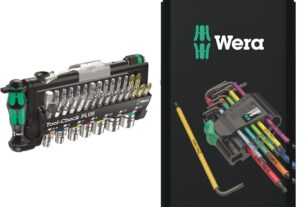If you are working in construction, utility maintenance, or any industry that requires a bucket truck, then having a tool board is essential. Not only does it provide organization and easy access to your tools, but it also promotes safety by reducing the risk of dropping items from the elevated platform.
In this article, we will go over everything you need to know about tool boards for bucket trucks. From the different types available to installation tips and maintenance, we’ve got you covered.
Types of Tool Boards
There are several types of tool boards available on the market, each with its own advantages and disadvantages. Here are some of the most common ones:
1. Steel Mesh Tool Boards – These are made of welded steel mesh and offer excellent visibility and ventilation. They are also lightweight and easy to install. However, they may not be suitable for holding smaller items.
2. Solid Steel Tool Boards – These are made of solid steel sheets and offer better support for heavier tools. They also have a more professional look compared to mesh tool boards. However, they can be heavier and more expensive.
3. Plywood Tool Boards – These are made of plywood sheets and offer a more affordable option for those on a budget. They are also customizable and can be cut according to your needs. However, they are not as durable as steel tool boards and may require frequent replacement.
4. Aluminum Tool Boards – These are made of aluminum sheets and offer a lightweight yet durable option. They are resistant to rust and corrosion, making them ideal for outdoor use. However, they can be more expensive than other materials.
Installation Tips
Installing a tool board on your bucket truck requires careful planning and execution. Here are some tips to help you get started:
1. Measure the size of your bucket truck platform – This will help you determine the size of the tool board you need.
2. Choose the right material – Consider the weight of your tools and the environment where you will be working. Steel and aluminum are suitable for outdoor use, while plywood may be more suitable for indoor applications.
3. Use a mounting bracket – A mounting bracket is necessary to secure the tool board to the bucket truck platform. Make sure it is compatible with your specific truck model.
4. Position the tool board correctly – The tool board should be positioned in a way that allows easy access to your tools. It should also not obstruct your view or interfere with any controls on the platform.
Maintenance
Proper maintenance of your tool board is crucial to ensure its longevity and safety. Here are some tips to keep it in good condition:
1. Clean regularly – Dirt, debris, and other contaminants can accumulate on the tool board and compromise its integrity. Use a soft brush or cloth to clean it regularly.
2. Inspect for damage – Check for any signs of wear and tear, such as cracks or dents. Replace any damaged parts immediately.
3. Securely fasten all tools – Loose tools can become dangerous projectiles in case of sudden movement or impact. Make sure all tools are securely fastened to the tool board at all times.
Conclusion
Having a tool board for your bucket truck is essential for both safety and efficiency in the worksite. With proper installation and maintenance, it can provide organization, easy access, and reduce the risk of accidents.
Remember to choose the right type of tool board for your needs, carefully plan its installation, and maintain it regularly. By doing so, you’ll have a reliable tool storage solution that will help you get the job done safely and efficiently.
References:
1. “Bucket Truck Safety Tips,” OSHA, https://www.osha.gov/news/newsreleases/national/09152020
2. “Choosing a Tool Board for Your Bucket Truck,” Utility Fleet Professional, https://utilityfleetprofessional.com/equipment/choosing-a-tool-board-for-your-bucket-truck
3. “How to Install a Tool Board on a Bucket Truck,” Industrial Safety & Hygiene News, https://www.ishn.com/articles/112323-how-to-install-a-tool-board-on-a-bucket-truck




